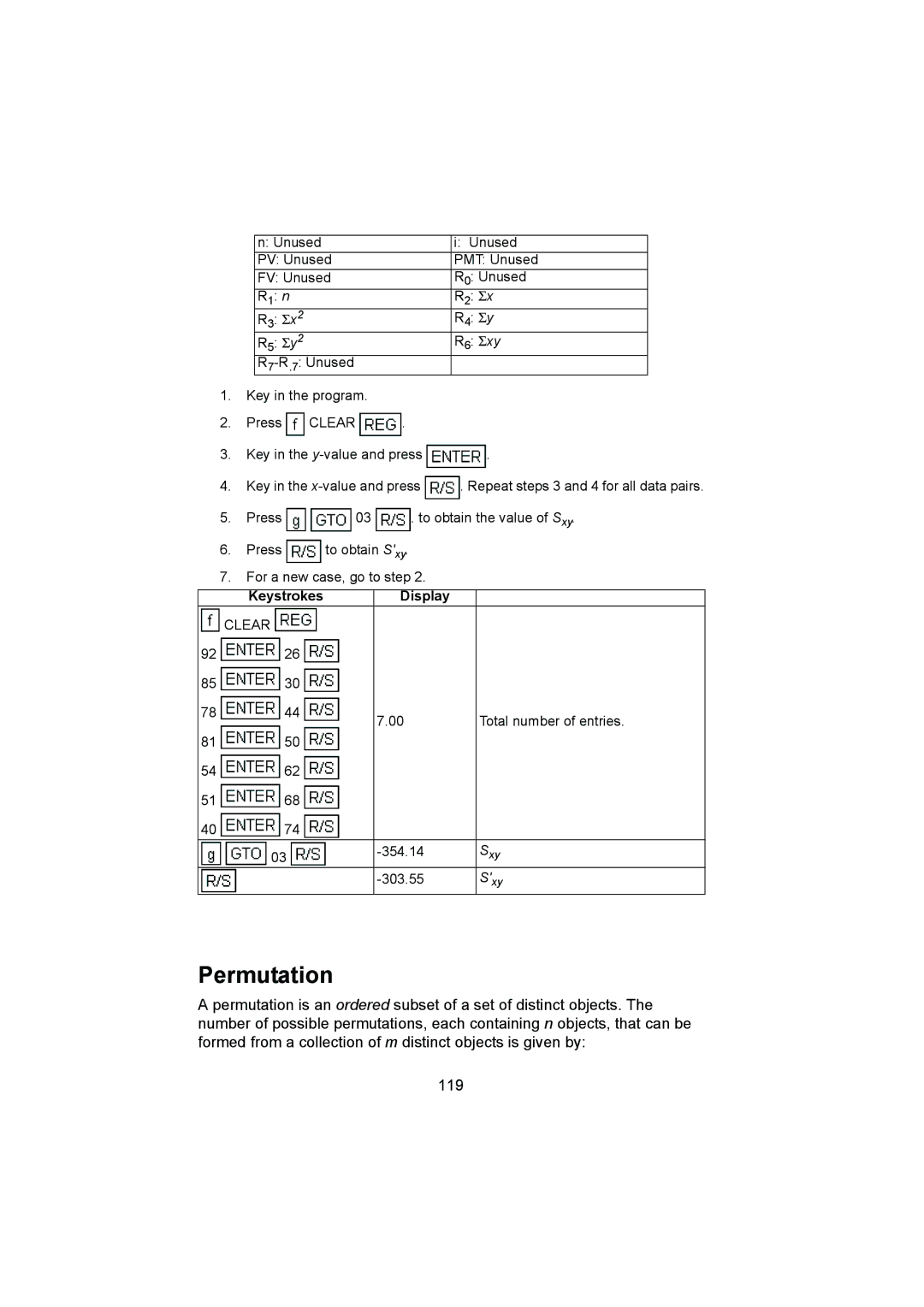
n: Unused | i: Unused |
PV: Unused | PMT: Unused |
FV: Unused | R0: Unused |
R1: n | R2: Σx |
R : Σx2 | R4: Σy |
3 |
|
R : Σy2 | R6: Σxy |
5 |
|
|
1.Key in the program.
2.Press ![]() CLEAR
CLEAR ![]() .
.
3.Key in the ![]() .
.
4.Key in the ![]() . Repeat steps 3 and 4 for all data pairs.
. Repeat steps 3 and 4 for all data pairs.
5.Press ![]()
![]() 03
03 ![]() . to obtain the value of Sxy.
. to obtain the value of Sxy.
6.Press ![]() to obtain S'xy.
to obtain S'xy.
7.For a new case, go to step 2.
Keystrokes Display
 CLEAR
CLEAR 
92 | 26 |
|
|
85 | 30 |
|
|
78 | 44 | 7.00 | Total number of entries. |
|
| ||
81 | 50 |
|
|
54 | 62 |
|
|
51 | 68 |
|
|
40 | 74 |
|
|
| 03 | Sxy | |
|
| S'xy |
Permutation
A permutation is an ordered subset of a set of distinct objects. The number of possible permutations, each containing n objects, that can be formed from a collection of m distinct objects is given by:
119
